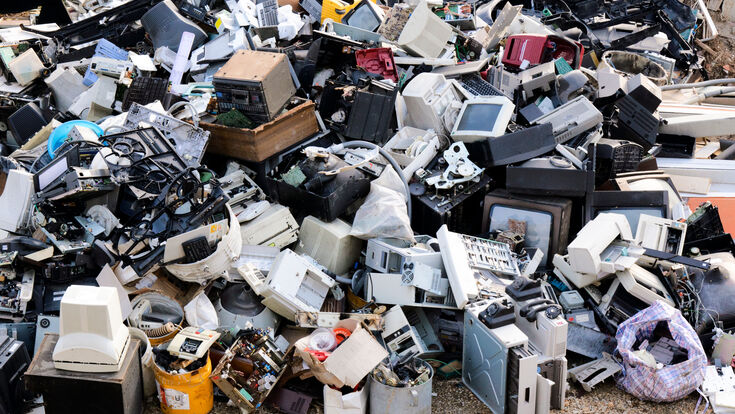Circular Economy : Circular by design: Project simulates product design for refrigerators and freezers

In the project, the recycling process of a refrigerator is mapped by means of process simulation on a micro level: There is a virtual product "refrigerator", which is reprocessed in a virtual recycling process. The recycling process includes both the physical initial treatment for refrigeration appliances (shredding and pre-sorting) and the further treatment of the material streams (e.g. metallurgical treatment). The process simulation requires detailed product and material information of the refrigerator as input and provides as result statements about the recyclability of the refrigerator - quantified by indicators for material recovery, environmental impact and resource consumption. Based on this scheme, the recyclability of different refrigerator designs can be compared on a micro level and the most sustainable "design for recycling" can be identified.
Initially, a household refrigerator and freezer provided by the manufacturer and project partner Liebherr will be used. As the project progresses, different design scenarios will be run at this point using information on new refrigerator designs developed in the project context. Refrigerator composition information will be collected at three levels: Component, Material, and Element composition.
The virtual recycling process is composed of two stages: Initial physical treatment (comminution and pre-sorting) and further processing (e.g. pyrometallurgical treatment). The combined consideration of both stages is of high importance, since the separation success of the physical primary treatment (as a result of digestion ratios after comminution and sorting efficiency) determines the quality (grade purity) of the intermediate recycling material streams, which in turn significantly influences the material recovery in the further (metallurgical) treatment.
Therefore, the recycling process is virtually represented by flowsheets with the help of process simulations, in which all necessary process steps are integrated and in which detailed information about the material composition and quality (compounds and impurities) exists at each step. In each process step, the process simulation requires the distribution of the substances (at the detailed level of the materials and/or components) to the respective output substance flows. This always ensures a closed mass balance in the simulation model.
The software used includes HSC Chemsitry (Outotec). Just like the recycling phase, the material and energy flows as well as the associated ecological effects must be determined in the manufacturing and use phases. This evaluation is carried out using classical methods of life cycle analysis by means of the OpenLCA software in combination with the ecoinvent database.
The "Circular by Design" project also addresses conflicting goals that may arise from different requirements in the areas of fire protection, food safety or recyclability. In addition, success or obstacle factors for individual actors along the entire value chain with regard to circular design and product-service systems are to be identified.
About the Initiative:
"Circular by Design" started in 2019 and is funded by the german state. Project partners are: Helmholtz-Zentrum Dresden-Rossendorf/ Helmholtz-Institut Freiberg für Ressourcentechnologie, Wuppertal-Institut für Klima, Umwelt, Energie gGmbH, Folkwang University of the Arts, Liebherr-Hausgeräte Ochsenhausen GmbH, BEC Becker Elektrorecycling Chemnitz GmbH, EKM Entsorgungsdienste Kreis Mittelsachsen.en.
